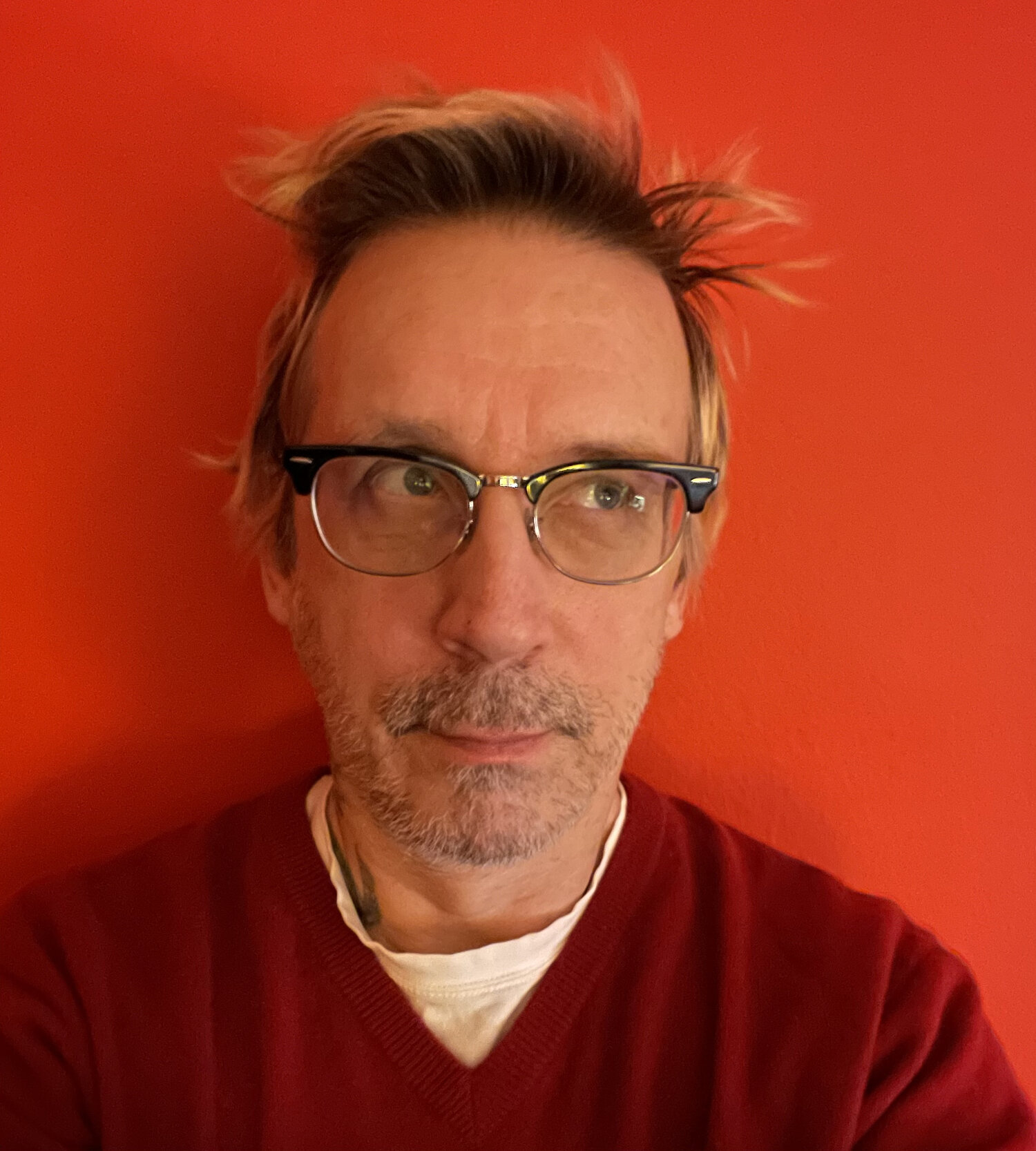Then.
This week an old friend unexpectedly said hello on Facebook and sent me images of some photos she’d run across as she was looking through old albums while isolated at home in London. Apparently I’m not the only one that the cancelation of our normal life, and fear of the future, has sent searching the archives. They were taken by her and her partner John in New York and London in the 1980s.
These fragments feel almost overwhelmingly precious now because they are fragmentary, because, for most of us, there is so little evidence. And even more so because Denise has lost the negatives, so her prints are all that’s left except these scans, photographs of photographs. Now with social media and cameras in our phones we see images of ourselves immediately and everywhere, no waiting, and we assume this material will survive as a comprehensive record. But images of vacations, special occasions, maybe a random assortment of everyday scenes is the most that most of us have of that time in the past, the only visual record there ever was. Denise and John are artists, so these snapshots are more than snapshots. But they are snapshots.
(My favorite thing about these images is the occasional fleeting, natural smiles. Now, we are so used to being photographed, we’re so used to seeing images of ourselves, we’ve honed our poses, our expressions, even children, for the camera. Smiles (or some other memetic expression like duck-face) are compulsory. They didn’t used to be. As self-conscious as we’ve become, in a way, pre-social media, we were more self-conscious around cameras because the appearance of one was unusual. Often we didn’t know what to do with ourselves, so our self-consciousness showed up in photos as something maybe a little awkward, a little vulnerable, whereas now our self-consciousness is perpetual and we’ve learned how to protect ourselves from appearing vulnerable in photos.)
Most of these shots are New York (I recognize the facade of Mike’s Bar & Grill, the restaurant where I waited tables), at least one is London, I think. Denise and John visited us in Ft. Greene, and we visited them in London. Both these visits happened between 1985 and 1989. I no longer remember the dates or the order or sequence. Does it matter?
Everyone seems to want to know how this pandemic is like AIDS, how these times are like the 1980s. Of course there are resonances, but most of the time I don’t know what to make of them. I don’t know what’s important or illuminating. Mostly, this present time feels completely different from then. As terrifying as the plague years were, as angry as we were much of the time, what I remember most clearly is joy, laughter, wild creativity, and freedom. Mostly freedom. Looking through that lens, I don’t know what to make of what’s happening now.
Denise and Brian, Post Office. (Photo by John Wynne.)
Denise and Brian, bodega. (Photo by John Wynne.)
My boyfriend Brian, top middle, on his right is John, Denise’s partner. I’m sitting in front of John, next to Denise. The other two look very familiar but I can’t place them. except that I think they were Italian. (After I posted this, Denise wrote to tell me that the two men on the left are her dear friends, Martin Klug and Jacque Vignault. Not Italian at all. So much for my memory.) (Photo by John Wynne.)
Steven and Denise, Mike’s American Bar & Grill (10th Ave. and 46th St.). (Photo by John Wynne.)
I think this is the “kitchen” in our Ft. Greene apartment. The landlord had wedged a sink and stove into the tiny room over the stairs, with the fridge just outside it in the bedroom. (In these Brooklyn brownstones that were originally single-family homes, this small room would have been called the “dressing room.”) (Photo by Denise Hawrysio.)






